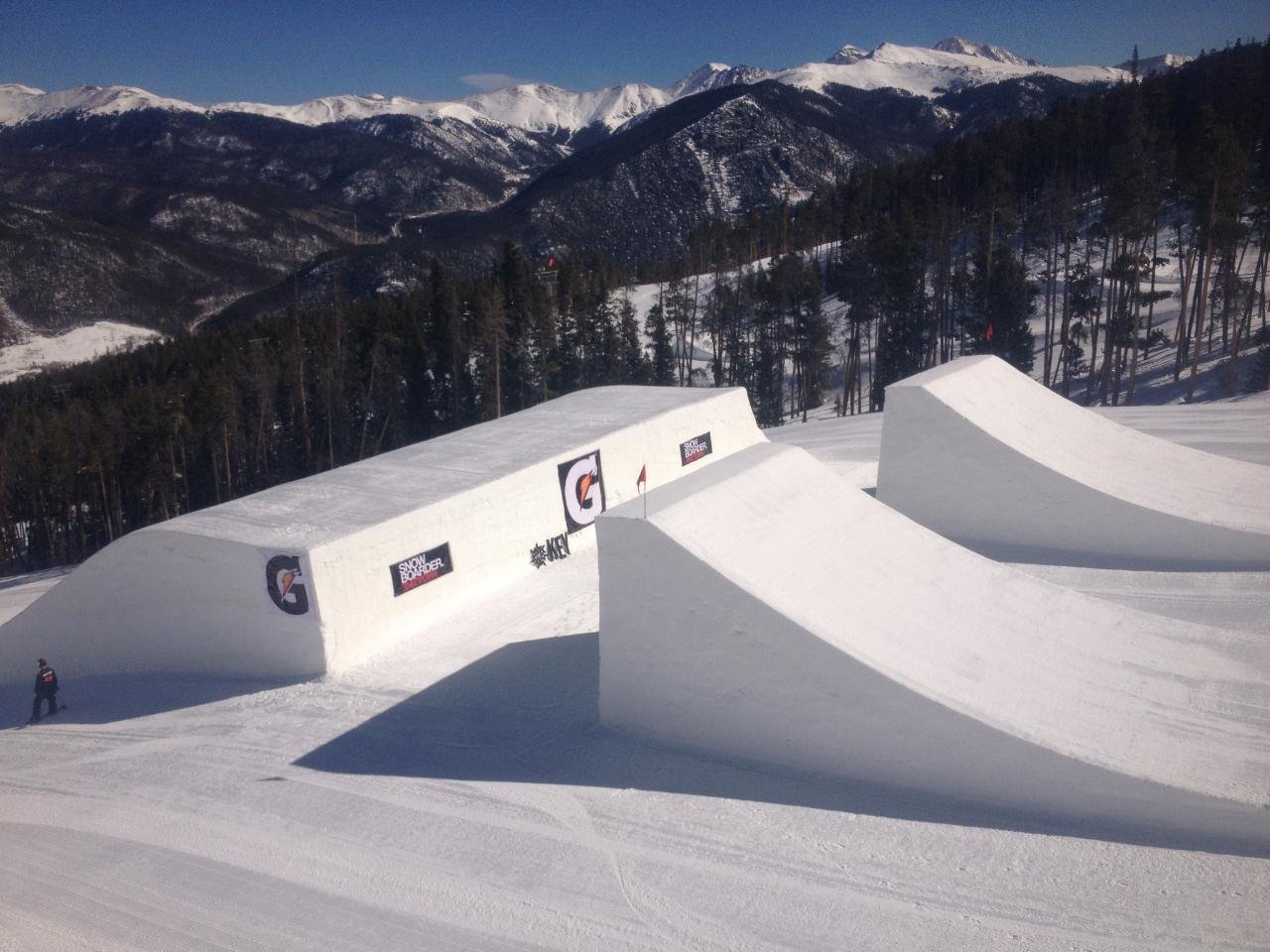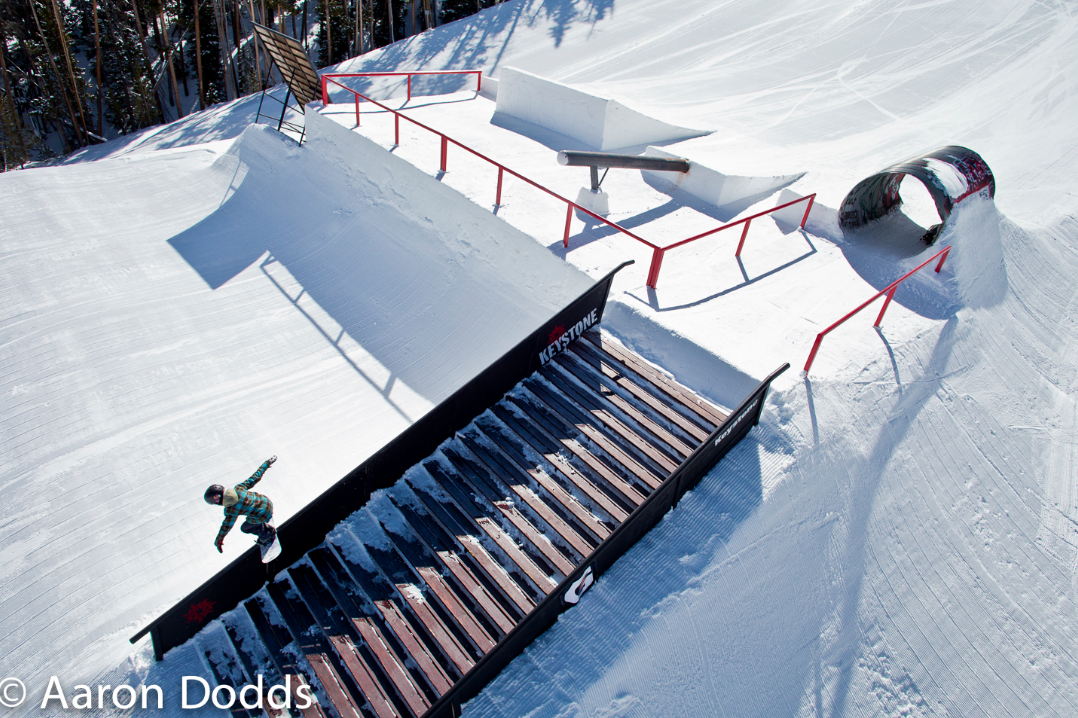News

By Jason Kornfeld, Staff Writer Posted 12 years ago April 13, 2013
Ski Resort Operations: Terrain Parks
With the rapid progression of skiing and snowboarding, resorts have been working hard to maintain terrain parks that continue challenging and satisfying guests and pros alike. For the last article covering resort operations, I caught up with the supervisor for terrain park and cat operations at Keystone Ski Resort, Tony Wertin, 32.
Wertin was contracted to build the slopestyle course for the 2012 X Games and has setup terrain parks around Colorado and in California. When I showed up he was preparing for the Nike photo shoot and showed me what it takes to design and construct a world-class terrain park.
How many people are on staff and is previous training required?
We have 20 people total that work for the terrain park. There are nine of us that operate cats and on each day there are four to five people working.
No previous training it’s all on-the-job.

Preparing a new step-over feature for the Nike photo shoot.

If you want to build a quality halfpipe then you will need a cat with a knarly saw attached.
What’s a typical day on the job, and what goes into getting ready for the season and continuing forward?
We work from 3:30 p.m. until 1:30 a.m. During this shift we maintain the features that we have. We resurface and groom everything. If we want to change something we assign a project to one or two people to get done during the shift.
During the preseason we initially build a terrain park at the summit. This involves about 30 features and acts as our opening park. Then as soon as that is up and running, and there’s enough snow, we begin to move further down the mountain and build the A51 Terrain Park. This can take a solid two weeks of snowmaking and work to get this done. Then, as the season progresses, overnight we take everything that’s at the summit and move it down to mid mountain to open the more advanced park, which we usually open last. As we get more snow we can build bigger and bigger features. In photoshoot season (after closing in spring) we talk with the companies coming in and figure out a design for the features they would like to see. We then begin tearing down everything and rebuilding the features to what they specifically want, which is a mixture of rider design and our creativity.
How do you design features?
We get our designs through everyone that works in the terrain park. The creativity comes from a coworker’s idea or a spinoff of that idea to make it more unique. We don’t do specific blueprints for the regular park we typically gauge it. So, if it’s a 45-foot jump then we need a certain amount of landing that’s at least 30 degrees. Meanwhile, during the post season we work with the companies and use three-dimensional sketches for specific features and tweak them as needed before construction. Overall, in the small park jumps are as large as 15 feet, medium jumps range from 10 to 45 feet, and the large jumps go from 50 to 75 feet.
During the season we keep a book of ideas and during the summertime we build the more important features. We do the rail building and welding ourselves.


The planning three-dimensional sketch and then the final product. Photos courtesty Tony Wertin.
How long does it take to construct an average jump or rail? Can you explain the process?
An average jump, from scratch, and with all the snowmaking already finished, it would take about three days. If you want to construct a rail line, four or five can be done in a 10-hour shift per person.
In terms of the process, first, I would build the landing and then use ropes to make measurements and use a chainsaw to ensure crisp and clean lines. Then I would remove the excess snow from chain-sawing to create the perfect shape. Once I push up the take off, I rope it and chainsaw it to make it clean.
How do you keep progressing and staying ahead of other resorts?
Usually our staff does everything, but sometimes we take input from pro skiers and snowboarders. Our staff is constantly thinking of ways to push the envelope. We have different levels of skiers and snowboarders on staff, and everyone likes to ride different things. This makes it a lot easier because everyone likes riding different features allowing for specialization.

A skier in the A51 Terrain Park. Photo Courtesy Chad Schmidt.
How do you mitigate danger, especially with new features?
For every feature that we build it’s mandatory to have it tested. We make sure it’s safe before it’s open to the general public. Usually, people on the terrain park staff are the testers. I do a lot of them but not all of the big ones. Also, myself and two other leads visually inspect the work to ensure safety and if there is a problem the feature is removed. Lastly, we build a lot of the features (rails, etc.) during the summer and make sure they are safe before used on the mountain.
In what direction do you see terrain parks moving?
People want things that look scarier than in actuality. I think things are becoming more street and skateboard influenced as skating becomes more popular - being able to build a skate park on the mountain.

A snowboarder in the A51 Terrain Park. Photo Courtesty Chad Schmidt.

Riding the A51 Terrain Park. Photo courtesty Aaron Dodds.
What’s the most difficult part of the job that guests don’t necessarily see?
The most difficult part of the job is dealing with snowstorms. When it snows a lot, because most of the features are hard to maintain anyway, we have to, by hand, dig out a lot of the features so they do not get closer to the ground and push snow off the jumps so the landings do not flatten – we cannot use machines because they will not fit in certain areas.

MS Super Park finished product, looking crisp and clean. Photo courtesty Tony Wertin.
About The Author




